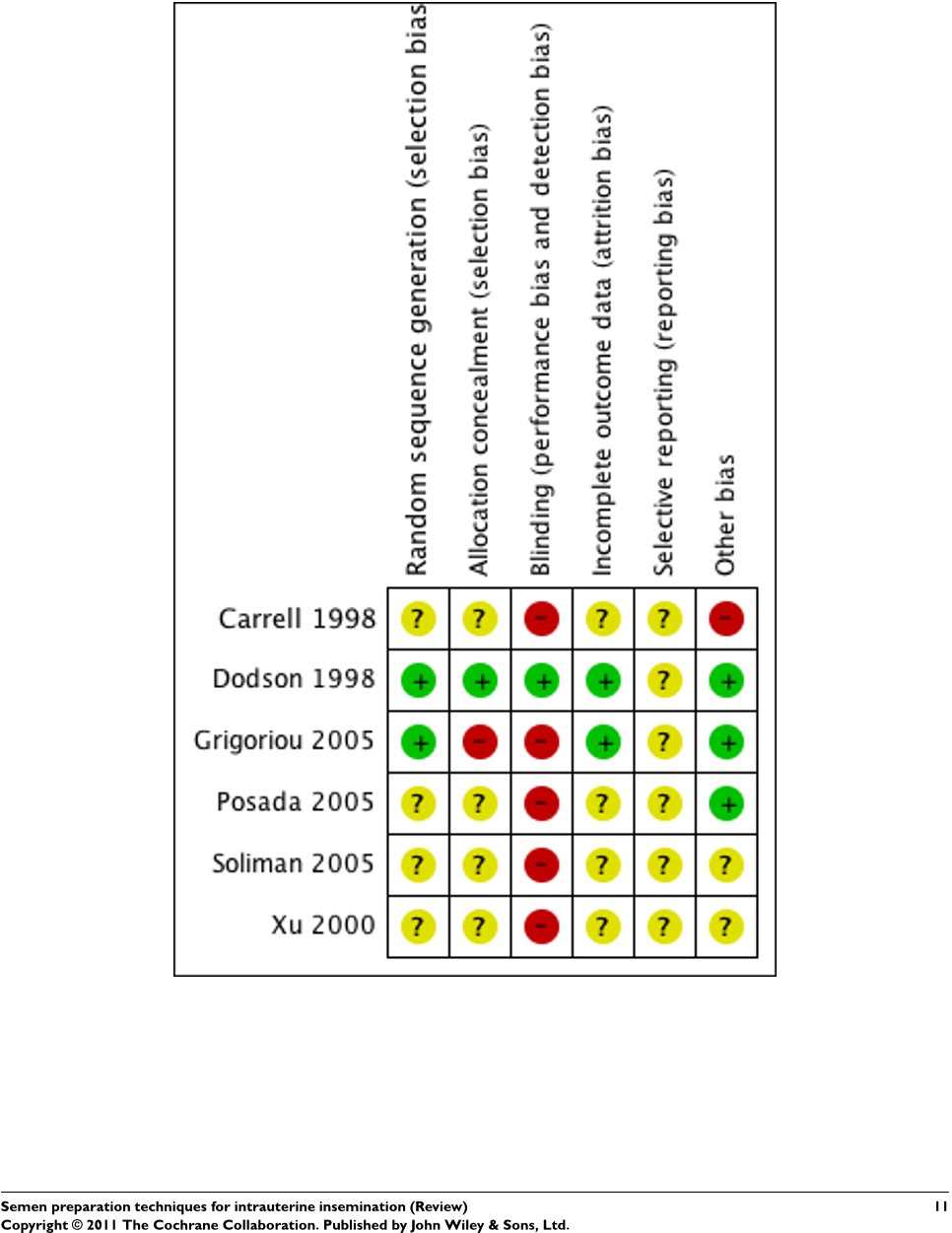Q2. What future works have the authors mentioned in the paper "Semen preparation techniques for intrauterine insemination (review)" ?
CI: Conf idence interval ; OR: Odds rat io ; GRADE Working Group grades of evidence High quality: Further research is very unlikely to change their conf idence in the est imate of ef fect. Moderate quality: Further research is likely to have an important impact on their conf idence in the est imate of ef fect and may change the est imate. Low quality: Further research is very likely to have an important impact on their conf idence in the est imate of ef fect and is likely to change the est imate. Some research has suggested an association between the probability of conception after IUI and the absolute number of motile sperm that are inseminated.
Q3. What is the importance of a high yield of sperm?
In couples with subfertility, the yield of as many motile, morphologically normal spermatozoa as possible is important as it influences treatment choices and therefore outcomes.
Q4. Who were the two main databases searched?
European Society of Human Reproduction and Embryology (ESHRE) and American Society for Reproductive Medicine (ASRM) abstract books were also handsearched.
Q5. Who was the author of the study?
A randomised controlled trial (RCT) of prepared sperm compared to unprepared first split ejaculates showed that semen preparation significantly increased the probability of conception after intrauterine insemination (IUI) in a group of couples with male subfertility (Goldenberg 1992).
Q6. How many RCTs were included in the meta-analysis?
Five RCTs, including 262 couples in total, were included in the meta-analysis (Dodson 1998; Grigoriou 2005; Posada 2005; Soliman 2005; Xu 2000).
Q7. What is the definition of infertile couples?
Subfertile couples are defined as couples who have tried unsuccessfully to conceive for at least one year despite regular and unprotected coital exposures (sexual intercourse) (Evers 2002).





